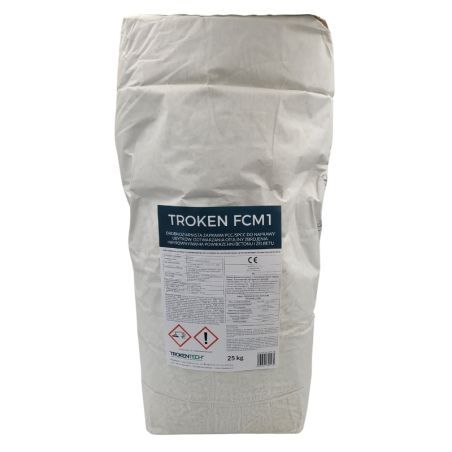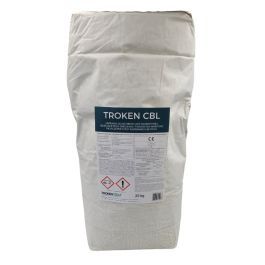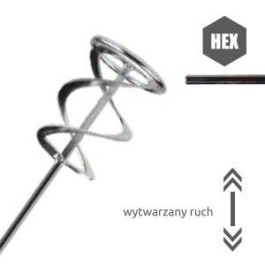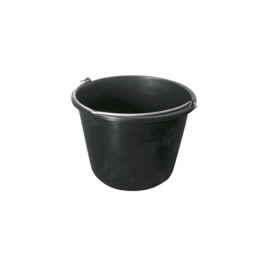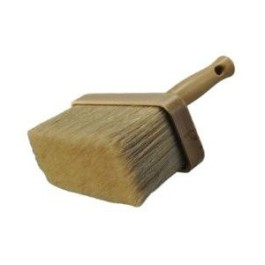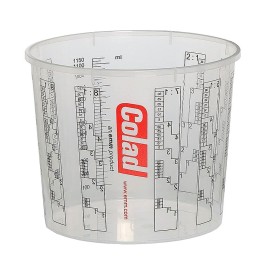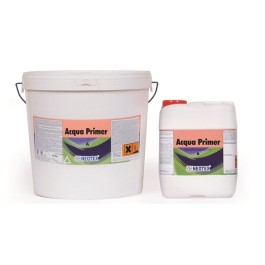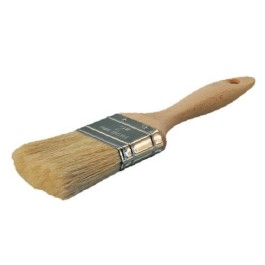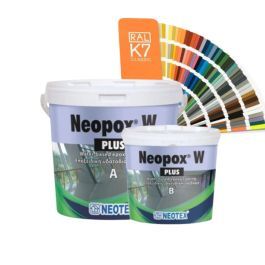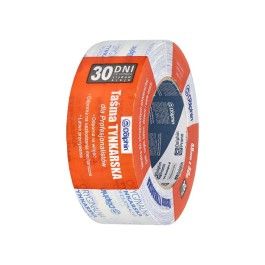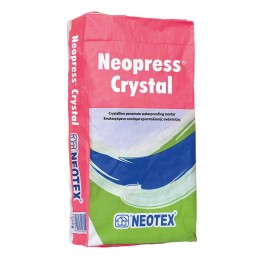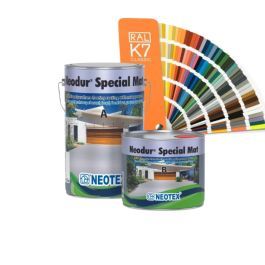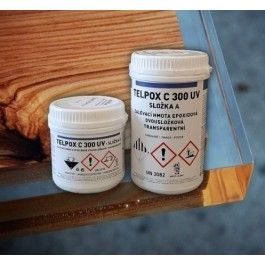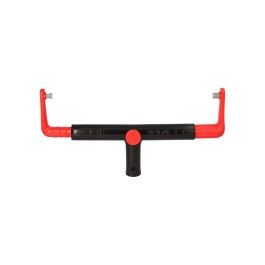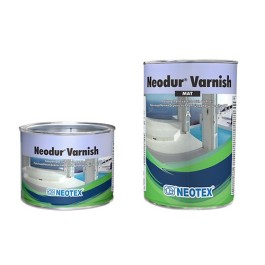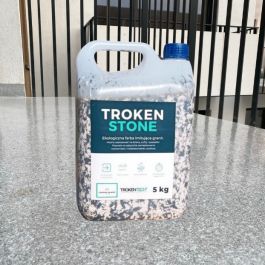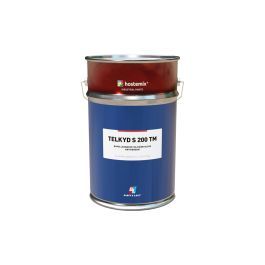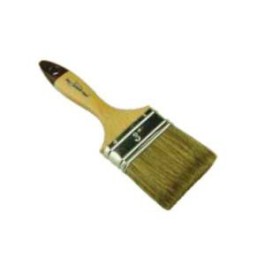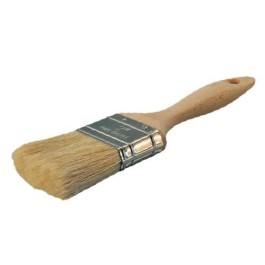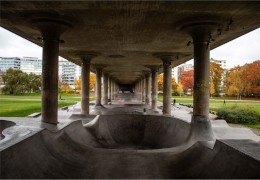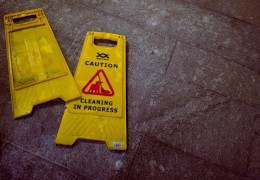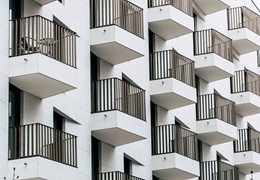Troken FCM is a one-component PCC/SPCC repair mortar class R4*. This polymer-modified cement-based material can be applied both by hand and by wet spraying (shotcreting). Thanks to the use of carefully selected aggregate and micro-silica, as well as reinforcement with synthetic fibers, it is an ideal solution for repairing defects in concrete, leveling the surface of prestressed, dynamic structures based on concrete and reinforced concrete, or restoring the reinforcement cover. Perfect for both indoor and outdoor use.
*Class R4 is the highest class possible to obtain according to standard 1504-03 regarding products and systems for the protection and repair of concrete structures. Products of this class are characterized by high adhesion, resistance to compression, and a high modulus of elasticity.
Troken FCM – properties:
- High adhesion and durability: the Troken FCM product bonds well with concrete and ensures durability in the R4 class!
- Ease of application: thanks to its consistency, the preparation can be applied both manually and by wet spraying (shotcreting).
- Versatility: Troken FCM can be applied to both horizontal and vertical surfaces as well as ceilings.
- Protection: the high tightness of the preparation and its low shrinkage allow for long-term protection of the protected places. At the same time, Troken FCM has breathable properties thanks to the permeability of water vapor.
- Easy to prepare : just mix with water to obtain a ready-made mortar.
- Key documentation: The product complies with the PN-EN 1504-3:2006 standard.
Troken FCM – application:
Troken FCM is ideal for and reinforced concrete structures that are exposed to dynamic loads and/or are prestressed, for indoor and outdoor use. The preparation is also resistant to various types of chemicals, such as water, defrosting salt, oil, petroleum products, as well as to corrosion, chemical aggression, and weather conditions!
- The product is perfect for repairing and leveling concrete in structures with the highest requirements, such as: bridges, viaducts, tunnels, overpasses, retaining walls, reinforced concrete chimneys, production halls, stadiums, water reservoirs and locks.
- Structures: concrete and reinforced concrete, including prestressed and/or dynamically loaded structures.
- Reprofiling of concrete surfaces and restoring and increasing the reinforcement cover.
- Surfaces: horizontal, vertical and ceilings, both in monolithic and prefabricated structures.
- Carrying out large concrete repairs using the wet spraying method (wet shotcreting).
- Repair of: cracks, scratches, crevices, holes, leveling and sealing of concrete surfaces. Creates an excellent base for protective and painting coatings.
Step-by-step application - for Troken FCM1 and Troken FCM2 products:
Troken FCM1 Substrate preparation
For reinforcing steel, perform the following steps:
1. Surface preparation:
- You should expose the corroded parts by chipping away at the cover until you reach non-corroded areas.
- If more than half of the rod has been corroded, it is necessary to forge the entire circumference to a depth of approximately 1 cm beyond the rod.
- It is necessary to remove all contaminants that reduce adhesion (dirt, dust, loose elements, etc.).
2. Steel protection:
- Two layers Troken CBL mortar should be applied to the cleaned reinforcing steel to properly protect it.
3. Concrete preparation:
- The concrete base should be dry, rough and have aggregate exposed to a depth of 2 mm.
- It is necessary to thoroughly clean the concrete of all contaminants, such as: dust, traces of lime, chemicals, bituminous substances or other elements that cover the concrete substrate and reduce its adhesion.
- Corroded or damaged concrete should be chipped away to a healthy, durable base.
- A pressure washer can be used to clean the concrete surface.
4. Concrete substrate requirements:
- Average tensile strength of concrete: >1.5MPa.
- The concrete should be moistened before application, but it cannot be very wet.
- When applying manually, it is recommended to use an additional, thin layer of Troken FCM1 as a bonding layer, which will increase the adhesion of the concrete. Then immediately apply the proper layer using the "wet on wet" method. If there is no wet application and the bonding layer dries, remove it and repeat the process! Troken CB L can be used as a bonding layer
5. Final instructions:
- Check whether the prepared surface meets the above requirements in terms of cleanliness, roughness and humidity.
- It is necessary to follow the detailed instructions contained in the technical data sheets of Troken FCM1 and Troken CBL .
- After application, the technical condition of the lagging should be regularly checked and, if necessary, maintenance repairs should be made.
Preparation of Troken FCM1 mass:
- Troken FCM1 mortar is supplied dry and requires 10 to 16% water by weight (example: for a 25 kg bag, add 2.5 to 4 liters of water).
- Pour approximately 2/3 of the required water into the container, then gradually add Troken FCM1 and mix thoroughly. It is recommended to use a low-speed mixer (300-400 rpm) or a counter-rotating mixer.
- Mix the resulting mass thoroughly for about 3 minutes, then add the remaining water and mix for another 2-3 minutes until a uniform consistency is obtained.
- Mortar ready for application.
Troken FCM2 substrate preparation:
1. Surface preparation:
- The corroded parts should be exposed by chipping away the cover to a length of 1.5 cm or until you reach non-corroded places.
- If more than half of the rod has been corroded, it is necessary to forge the entire circumference to a depth of approximately 1 cm beyond the rod.
- It is necessary to remove all contaminants that reduce adhesion (dirt, dust, loose elements, etc.).
2. Steel protection:
Two layers Troken CBL mortar should be applied to the cleaned reinforcing steel to properly protect it.
3. Concrete preparation:
- The concrete base should be dry, rough and have aggregate exposed to a depth of 2 mm.
- It is necessary to thoroughly clean the concrete of all contaminants, such as: dust, traces of lime, chemicals, bituminous substances or other elements that cover the concrete substrate and reduce its adhesion.
- Corroded or damaged concrete should be chipped away to a healthy, durable base.
- A pressure washer can be used to clean the concrete surface.
4. Concrete substrate requirements:
- Average tensile strength of concrete: >1.5MPa.
- The concrete should be moistened before application, but it cannot be very wet.
- Immediately before applying the mortar, remove excess water and apply a bonding layer of Troken CBL.
- If the concrete is dry, porous or has high water absorption, it is recommended to moisten it with water for 24 hours before applying the bonding layer. The same procedure is recommended in difficult conditions such as high temperatures, high sunlight or intense winds.
- The same preparation should be used for substrates made of cement-based mineral mortars.
5. Final instructions:
- Check whether the prepared surface meets the above requirements in terms of cleanliness, roughness and humidity.
- It is necessary to follow the detailed instructions contained in the technical data sheets of Troken FCM2 and Troken CBL .
- After application, the technical condition of the lagging should be regularly checked and, if necessary, maintenance repairs should be made.
Preparation of Troken FCM2 mass:
- Troken FCM2 mortar is supplied dry and requires 10 to 16% water by weight (example: for a 25 kg bag, add 2.5 to 4 liters of water).
- Pour approximately 2/3 of the required water into the container, then gradually add Troken FCM2 and mix thoroughly. It is recommended to use a low-speed mixer (300-400 rpm) or a counter-rotating mixer.
- Mix the resulting mass thoroughly for about 3 minutes, then add the remaining water and mix for another 2-3 minutes until a uniform consistency is obtained.
- Mortar ready for application.
Differences between Troken FCM1 and Troken FCM2 products:
|
Troken FCM1
|
Troken FCM2
|
|
parameter
|
Value
|
|
Grain size
|
up to 1 mm
|
up to 2 mm
|
|
Layer thickness
(in one work cycle)
|
2÷30 mm
(locally up to 40 mm)
|
6÷40 mm
(locally up to 50 mm)
|
|
Density of fresh mortar
|
approximately 2.4 kg/dm3
|
approximately 2.1 kg/dm3
|


